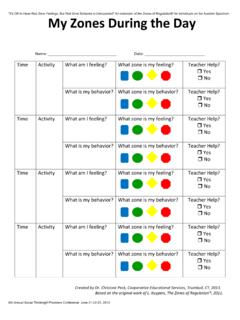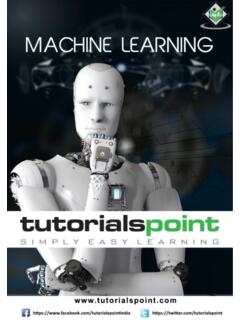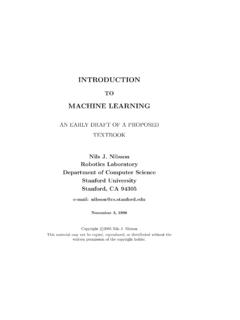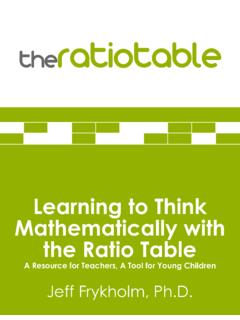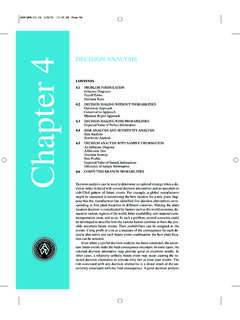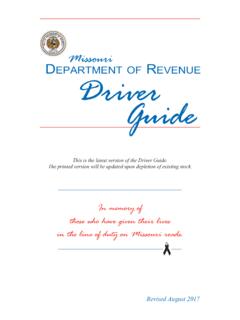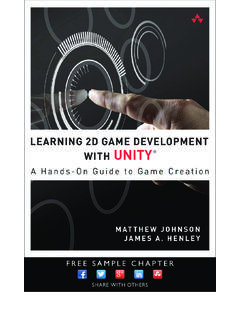Transcription of Table of Contents
1 VTable of ContentsForeword By Michelle Garcia Winner ..ixChapter 1: Get the Curriculum ..1 Who can teach The Zones of Regulation? .. 2 Who can benefit from The Zones? ..2 What is self-regulation? ..3 The story behind The Zones ..6 Works that influenced The Zones of Regulation ..7 What are The Zones of Regulation? ..8 Zones Vocabulary ..10 Chapter 2: Get to Use the Curriculum ..11 Forming groups .. 11 Collaborating with students teams ..12 Reproducible A: Information About The Zones of Regulation ..13 Reproducible B: The Zones of Regulation Glossary ..14 Organizing materials in Zones Folders ..15 Structure of group sessions ..15 Linking The Zones to academic standards ..16 Checking for learning ..17 The lesson sequence ..17 Gathering materials .. 19 Supplements to the curriculum ..20 Chapter 3: Go!!!Introducing Students to The Lesson 1: Creating Wall Posters of The Zones ..26 Reproducible C: Zones Emotions .. 30 Reproducible D: Zone Labels.
2 34 Reproducible E: The Zones of Regulation Visual ..36 Lesson 2: Zones Bingo ..37 Reproducible F: Zones Bingo Cards ..40 Time for Refueling ..48 Lesson 3: The Zones in Video ..54 Lesson 4: The Zones in Me ..56 Reproducible G: Zones Scenarios ..59 Reproducible H: Which Zone Should I Be In? ..61 Lesson 5: Understanding Different Perspectives ..62 Reproducible I: Understanding Different Perspectives ..67 vi Table of Contents Reproducible J: Expected Social Behavior K: Unexpected Social Behavior Map ..72 Lesson 6: Me in My Zones ..73 Reproducible L: Me in My Zones Worksheet ..76 Lesson 7: How Do I Feel? ..82 Reproducible M: Zones Idioms ..85 Lesson 8: My Zones Across the Day ..86 Reproducible N: My Zones Across the Day Worksheet ..90 Reproducible O: Thought Bubbles ..91 Lesson 9: Caution! Triggers Ahead ..92 Reproducible P: Triggers Worksheet ..95 Ways to Check for learning ..96 Reproducible Q: Zones Check-In Template ..99 Chapter 4: And They re OffExploring Tools to Calm and Alert.
3 102 Lesson 10: Exploring Sensory Support Tools ..108 Reproducible R: Zones Tools Worksheet ..112 Lesson 11: Exploring Tools for Calming .. 113 Reproducible S: Six Sides of Breathing ..118 Reproducible T: Lazy 8 Breathing ..119 Reproducible U: Calming Sequence ..120 Lesson 12: Exploring Tools Thinking Strategies ..121 Reproducible V: Size of the Problem Worksheet: Big vs. Little Problems ..125 Reproducible W: Size of the Problem Visual ..126 Reproducible X: Inner Coach Worksheet ..129 Reproducible Y: Inner Critic Worksheet ..130 Ways to Check for learning ..134 Chapter 5: Approaching the Finish LineLearning When to Use and Apply Tools ..135 Lesson 13: The Toolbox ..136 Reproducible Z: Toolbox Reproducible AA: Zone Tools Menu ..140 Reproducible BB: Tools for Each of My Zones Worksheet ..142 Lesson 14: When to Use Yellow Zone Tools ..143 Reproducible CC: When to Use My Yellow Zone Tools Worksheet ..148 Lesson 15: Stop and Use a Tool ..149 Reproducible DD: Stop and Use a Tool: Stop Sign Visuals.
4 151 Lesson 16: Tracking My 152 Reproducible EE: Tracking My Tools Worksheet ..155 Lesson 17: STOP, OPT, and GO ..156 Reproducible FF: Individual STOP, OPT and GO Visuals ..159 Reproducible GG: STOP, OPT, and GO Solution ..160 viiThe ZONES of Regulation Lesson 18: Celebrating My Use of Tools ..161 Reproducible HH: Tool Awards! ..163 Reproducible II: Zones License ..164 Ways to Check for learning ..165 Chapter 6: And the Winner Information for The Zones ..166 Teaching Strategies for Students with Neurobiological Disorders ..168 AppendixFrequently Asked Questions ..174 Proposed IEP Goals for Building Self-Regulation ..177 Recommended Resources ..179 Bibliography ..181 Acknowledgements ..185 ixForeword for The Zones of Regulation By Michelle Garcia WinnerTeachers, parents, occupational therapists, counselors, speech language pathologists, and others are interested in learning about our students different sensory, social learning , executive functioning, and emotional regulation needs, but they struggle to find ways to incorporate these different areas of need into a more integrated teaching approach.
5 Behaving oneself requires our students to carry out a desirable action while simultaneously thinking, monitoring, and controlling their behavior on many the past 10 15 years, it has become generally recognized that our students who have self-regulation challenges whether we refer to these students as having an Autism Spectrum Disorder, ADHD, Non-Verbal learning Disability, behavioral challenges, etc. appear to benefit both from some common treatment approaches and from increasing their under-standing of their learning needs. This has led to the creation of specific programs to help explain their learning differences, such as the SCERTS Model (Prizant, et al. 2006), Ziggurat Model (Aspy & Grossman 2007), The Comprehensive Autism Planning System (CAPS) (Henry & Myles 2007), as well as the ILAUGH Model (Winner, 2000). These programs highlight areas that our students need to learn more about, including the following: Sensory integration and regulation, helping them learn to manage sensory input from the environment so they can process and respond in ways in which they are expected to function.
6 Emotional self-understanding and emotional self-regulation. Emotions can confuse or overwhelm our students. It s key to help them learn to understand the connection between their sensory systems, their emotions, and their ability to relate to the world in ways that make others feel comfortable relating to Foreword Executive functioning and cognitive control of behaviors. These brain-based skills, such as impulse control, sustaining attention, planning, problem solving, and self-talk, serve as the foundation to manage one s functioning in life and overcome the hurdles that stand in the way in reaching a goal. Visual scaffolds and visual teachings. Our students, even the highest functioning ones, usually benefit from structured visual information. Not only does visual structure cater to the visual learning style of many of our students, but it also encourages us as caregivers to take abstract lessons and present them in more concrete, visually based teachings.
7 Even students who are not visual learners can benefit from highly visual, well-organized material, just as those of us who are not auditory learners can benefit from clear auditory instruction. Social Thinking and related Social Thinking vocabulary. The teachings of Social Thinking provide explicit language-based concepts from which people can develop a better understanding of social perspective taking and interpretation of social emotional responses. Development of self-awareness. This is a critical factor in any program encouraging internal regulation of any concept or related addition, many other resources, such as Carol Gray s Social Stories (The New Social Story Book, 10th Anniversary Edition, 2010) and Comic Strip Conversations (1994), and Dunn Buron s and Curtis s The Incredible 5-Point Scale (2004) help to foster the development of some of the different areas described above for 2009, I first heard Leah Kuypers speak on The Zones of Regula-tion , a concept she developed based on her graduate studies and teaching experience and then documented when a graduate student in Education.
8 While writing The Zones of Regulation curriculum she also received guid-ance from Kari Dunn Buron, one of the two creators of The Incredible 5-Point Scale. The Zones, as the concept is referred to in this book, integrates all of the above-mentioned approaches and teaching tools to help students better understand their needs regulation. The goal of The Zones is to help stu-dents develop social, emotional, and sensory Zones provides teachers and parents with very clear instructions to guide their students through a set of sequenced lessons, encouraging stu-dents to learn about their own regulation system and how they can adjust it. The Zones uses four colors to help students visually and verbally self-identify how they are functioning in the moment given their emotions and states of alertness. Lessons are designed to help students understand their xiThe ZONES of Regulation different internal emotions, sensory needs, and thinking patterns that result in each student shifting from one zone to another.
9 Students explore a vari-ety of tools (sensory supports, calming techniques, and thinking strategies) that they can use to regulate what zone they are in and are taught when, why, and how to use their Zones of Regulation also incorporates core teachings from Social Thinking to help students learn more about perspective taking to better understand how being in the different zones impacts others thoughts and feelings around them. In addition, The Zones curriculum helps students gain an increased vocabulary of emotional terms, skills in reading facial expressions, insight on events that trigger their behavior, problem solving skills, and much I heard Leah discuss The Zones of Regulation, I was impressed by how she interlaced selected lessons from Social Thinking, such as Social Behavior Mapping, with her knowledge of sensory regulation, and with The Incredible 5-Point Scale into a very practical tool to help students develop improved social emotional behavioral awareness and related Leah agreed to work with me to publish this book, we closely collaborated to refine her lessons to aid non-specialized adult caregivers ( , teachers and parents), who may have relatively little background knowledge related to those with social learning challenges.
10 By using this book, such non-specialists will be able to help students with these challenges to use The Zones techniques across the home, community, and school environments. At the same time, specialists who have more basic teaching knowledge will appreciate the melding of different areas of learning needs into one tool they can incorporate into their work with school-age students. Educa-tors and parents as well as specialists can simplify these lessons as needed for students with more involved learning challenges or modify them to be more appropriate for those who are more sophisticated am thrilled to finally see this book in print and hope these teachings will help all of our students better evaluate their current social emotional zones and make better choices to regulate their thoughts, actions, and sensory needs in a manner that helps them feel proud of themselves for working to be more responsible members of their community. Michelle Garcia Winner40 The ZONES of Regulation Reproducible F Bingo Card 1 Copyright 2011 Leah M.

